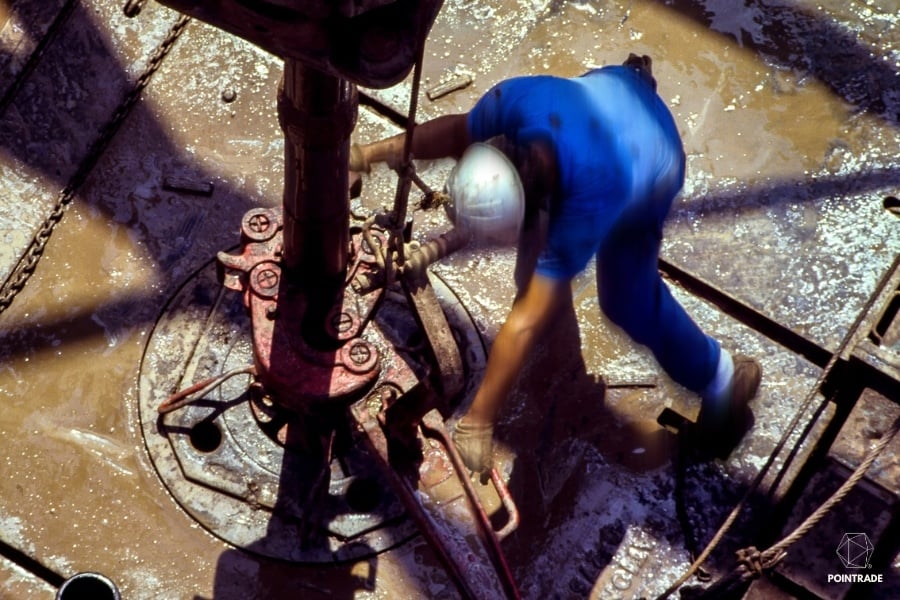The Role of Anchors in The Supply Chain

A supply chain can be compared to a complex machine that requires all parts to function together to work seamlessly. When cash flow issues get in the way, all efforts to make the machine work will grind to a halt. Anchors are vital to ensuring that supply chain operates smoothly. They adjust the sails, navigating financial waters smoothly.
Who are the Anchors in the Supply Chain?
Anchors have significant power of influencing the entire chain. With their consistent demand and financial stability, suppliers aiming to achieve a sense of security and predictability can rely on anchors to establish that much-needed foundation. Since efficient movement of goods is a supply chain essential, anchors make sure that there are no missing links that will disrupt supply chain operations. Anchors have an established network that connects different parts of the chains to ensure timely and uninterrupted delivery of goods.
The role of anchors extends beyond their traditional responsibilities because with innovation and technology changing the way supply chain operates, anchors also have additional responsibilities to carry out.
Anchor-based supply chain finance plays a crucial role in mitigating financial risks caused by supply chain disruptions. By providing a safety net to the entire supply chain ecosystem, anchors help stabilize global chains. Whether it involves infrastructure development or efficient customs procedures, anchors harmonize regulations across borders, contributing to stability within the supply chain
The Importance of Anchors: Maintaining Stability and Security
For supply chains to become a well-oiled machine, anchors need to navigate the challenges by implementing supply chain finance strategies. Here are several strategies that anchors incorporate:
- Established companies are impervious to disruptions because innovation is their top priority. With continuous innovation, there will be less room for unforeseen risks. Having diversified sourcing strategies and financial resources help suppliers who might struggle with abrupt changes recover or continue their supply chain operations.
- Anchors have consistent demand patterns, providing a degree of predictability within the supply chain, allowing suppliers to plan their production more effectively. This practice leads to increased operational efficiency and reduced risks.
- Managing cash flow within the chain can be challenging when access to working capital is limited. Anchors ensure various financing options are available to prevent cash flow shortages. When there is a steady flow of cash, disruptions caused by cash flow shortages will be prevented.
- There are many aspects of supply chain operations that anchors tap into. They help establish efficient transportation network, upgrade warehouses, and implement advanced logistics technologies for faster delivery times and reduced transportation costs, allowing suppliers to experience improved supply chain operations.
The Broader Impact of Anchors
Ensuring stability is not the only aspect that anchors are focusing on because they also play a significant role in driving change within the supply chain:
- Anchors leverage purchasing power to ensure supply chains follow sustainable practices. Beyond the financial aspect that sustain supply chains, it is important to maintain environmental and social standards to drive positive impact on labour conditions and production methods.
- Anchors can also serve as early adopters of technologies such as supply chain finance platforms. These advancements can change the way supply chain access funds as supply chain finance platforms can eliminate unnecessary processes. Technologies that help supply chain operations streamline processes, enhance transparency and improve supply chain visibility.
Challenges and Considerations
Anchors are vital to supply chain operations, but it is also important to acknowledge potential challenges:
- Relying on a single anchor can pose risks on suppliers, once the anchor experiences financial difficulties or decides to shift to a different sourcing strategy. It is not only the supplier that will be affected when this happens as it can also have a cascading effect on everyone on the supply chain.
- Power imbalances are another problem that anchors need to face. This happens to smaller anchors who are forced to accept unfavourable terms and conditions, affecting smaller anchors’ profitability.
- For suppliers located in developing economies, access to funding is going to be the biggest hurdle to overcome. Anchors need to create a level playing field that promotes inclusive participation in a healthy supply chain ecosystem.
Building a Collaborative Ecosystem
As the supply chain undergoes constant transformation, the role of anchors will inevitably adapt. Competition will give way to collaboration, with successful anchors prioritising partnerships and knowledge sharing across the ecosystem. Anchors will play a crucial role in building resilience by fostering responsible sourcing practices and implementing robust risk management strategies to mitigate potential disruptions. Their ability to adapt and collaborate will be key to a thriving supply chain in the years to come.
POINTRADE Empowers Anchors to Thrive in The Evolving Supply Chain
POINTRADE recognises the role of anchors in the supply chain. We help anchors strengthen supplier relationships by offering payment options that facilitate smoother cash flow. We will help you reinvest in strategic initiatives, ensuring financial inclusivity so anchors become more adaptable in a competitive market. We partner with anchors to build more resilient supply chain. Talk to us to learn more about our supply chain finance solutions.